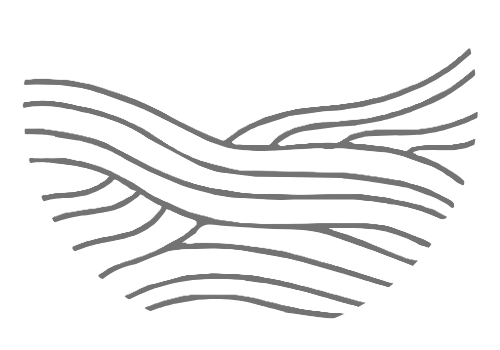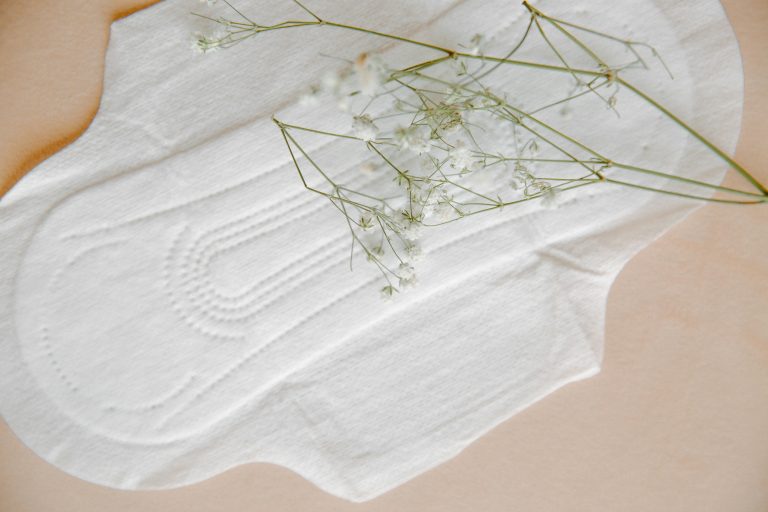You know that feeling when period cramps hit and you’d try ANYTHING to make them stop? I sure do. Back in my high school days, I’d be sitting in class, desperately trying to focus while feeling like someone was twisting my insides with a hot knife. If you’re reading this, chances are you’ve been there too – or your daughter is complaining about unbearable period cramps.
One remedy that keeps popping up in wellness circles is ginger. But does it actually work, or is it just another Pinterest-fueled fantasy? As someone who spent years curled up with a heating pad wondering the same thing, I decided to dig into the actual science. Let’s separate fact from fiction about ginger and period pain!
The Science Behind Period Pain
First, let’s talk about what’s actually happening during those awful cramps. Your uterus is essentially having contractions, triggered by hormone-like substances called prostaglandins. Higher levels of these prostaglandins = more intense cramping. It’s not “all in your head” – it’s legitimate pain with a biological cause.
For years, the standard advice has been to pop an ibuprofen and power through. These medications work by blocking prostaglandins, which is effective, but comes with potential side effects like stomach irritation and digestive issues (which, let’s be honest, is the last thing you need when you’re already dealing with your period) all the way to liver damage.
This is exactly why I became interested in natural alternatives. After one particularly brutal day in geography class where I was forced to write an exam despite feeling absolutely miserable, I made it my mission to find something that would help without making me feel worse in other ways.
What Research Says About Ginger and Period Pain
Here’s where things get interesting! Several legitimate clinical studies have compared ginger to both placebos and conventional medications like ibuprofen. One study published in the Journal of Alternative and Complementary Medicine found that ginger was as effective as ibuprofen for relieving menstrual pain. Let that sink in – a natural remedy performing as well as medication!
Another randomized controlled trial showed that women taking ginger experienced significantly reduced pain compared to those taking a placebo. The participants rated their pain severity before and after treatment, and the ginger group reported substantial improvement.
What I find particularly fascinating is that the research suggests ginger doesn’t just mask the pain – it actually addresses some of the underlying mechanisms. One study found that ginger reduced both the intensity and duration of pain, which is pretty impressive for a humble root you might already have in your kitchen.
That said, we should acknowledge that the research, while promising, isn’t absolutely conclusive. Many studies have been relatively small, and we need more large-scale research. But the consistent positive findings across multiple studies are certainly encouraging!
How Ginger Works to Relieve Menstrual Pain
So what’s the magic behind ginger’s pain-fighting abilities? It all comes down to compounds called gingerols and shogaols. These natural powerhouses have anti-inflammatory properties that work similarly to NSAIDs like ibuprofen – they inhibit the production of those pain-causing prostaglandins I mentioned earlier.
But ginger has another trick up its sleeve: it improves circulation. Better blood flow means less cramping and less pain. I’ve noticed that when my circulation improves (through exercise or warmth), my cramps often ease up – ginger seems to promote this effect naturally.
One thing I wish I’d known as a teenager is that ginger has benefits beyond just pain relief. It can also help with nausea and digestive issues that often accompany periods. Back in those days I was dealing with both cramps AND an upset stomach – ginger could have potentially helped with both!
Effective Ways to Use Ginger for Period Pain
Let’s get practical – how exactly should you use ginger for period pain? Based on the research and my own experiences, here are the most effective approaches:
Ginger tea is probably the easiest method. Simply steep 1-2 teaspoons of freshly grated ginger in hot water for 5-10 minutes. Adding honey and lemon makes it more palatable if you find the taste too strong. I’ve found that sipping ginger tea throughout the day works better than just having one cup.
For more targeted relief, research suggests taking 750-1000mg of ginger powder in capsule form daily, split into 3-4 doses. Studies show starting 1-2 days before your period begins and continuing through the first few days offers the best results.
Fresh ginger seems to be more potent than dried, but supplements offer convenience and consistent dosing. If you’re using supplements, look for ones that specify the gingerol content for maximum effectiveness.
One game-changing tip I discovered: combining ginger with heat therapy (like a heating pad) seems to amplify the pain-relieving effects. During one particularly rough period, I sipped ginger tea while using a heating pad and noticed much faster relief than with either method alone.
Potential Side Effects and Precautions
While ginger is generally considered safe, it’s not without potential downsides. Some people experience mild digestive discomfort, heartburn, or a burning sensation in the mouth. Starting with smaller amounts and working your way up can help minimize these effects.
Ginger can also act as a mild blood thinner, so if you’re taking medications like warfarin or aspirin, or have a bleeding disorder, you should check with your doctor before using ginger for period pain. Similarly, if you have gallbladder disease, low blood pressure, or diabetes, a conversation with your healthcare provider is warranted.
It’s also important to recognize when period pain requires medical attention. If your cramps are so severe that they regularly interfere with daily life, or if over-the-counter methods consistently fail to provide relief, please see a doctor. Conditions like endometriosis and PCOS can cause extreme period pain that requires specialized treatment.
Beyond Ginger: Complementary Approaches
In my experience, the most effective approach to period pain isn’t relying on just one remedy but combining several strategies. While ginger may be helpful, pairing it with other evidence-based methods can provide even better relief.
Regular exercise has been shown to reduce period pain – though I know the last thing you want to do when cramping is hit the gym! But gentle movement like walking or stretching can make a significant difference. I’ve found that staying active in the weeks leading up to my period helps reduce the intensity of cramps when they arrive.
Dietary changes may also help. Research suggests that diets rich in omega-3 fatty acids and low in processed foods may reduce inflammation and menstrual pain. Magnesium-rich foods like dark chocolate (yes, really!), nuts, and leafy greens can help relax muscles and ease cramping.
Stress management is another crucial component. I’ve noticed my cramps are always worse during stressful periods. Techniques like deep breathing, meditation, or even just taking time for activities you enjoy can help manage both stress and pain.
The Bottom Line on Ginger for Period Pain
After diving into the research and reflecting on my own experiences, I believe ginger is worth trying as a natural approach to period pain management. The scientific evidence, while not definitive, is certainly promising enough to merit consideration.
What I love about ginger as an option is that it’s accessible, affordable, and comes with minimal downsides. It’s something you can easily incorporate into your routine, whether through cooking, tea, or supplements.
If I could go back and talk to my teenage self, sitting there in math class trying not to cry from the pain, I’d definitely suggest giving ginger a try. While it may not be a miracle cure for everyone, the research suggests it helps many women – and it might just help you or your daughter too.
Have you tried ginger for period pain? What’s been your experience? I’d love to hear your thoughts in the comments below – we’re all in this together, after all!
Remember, every body is different, and what works for one person might not work for another. The key is to keep trying different approaches until you find what works for you. Here’s to finding relief and reclaiming those days that period pain tries to steal from us!
Want to help your daughter have an easier time with her period? I remember the struggles, and I know how helpless it can feel having to suffer through painful periods. That’s why I’m passionate about helping moms and their daughters finding effective, wholesome and natural ways to navigate these symptoms with confidence and care. She doesn’t have to suffer. In my coaching program, I will work with you to create a personalized support plan combining gentle nutrition tips, simple lifestyle adjustments, and natural comfort measures that work.
Let’s make this journey smoother – for both of you. Schedule a discovery session with a coach to explore how we can help your daughter feel more comfortable and confident during her period. My approach focuses on education and practical solutions that fit seamlessly into your family’s lifestyle.







